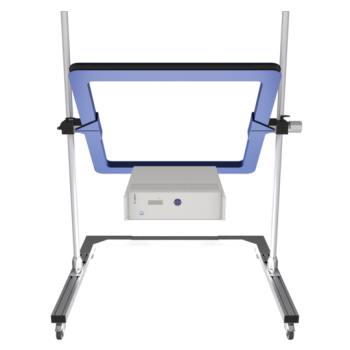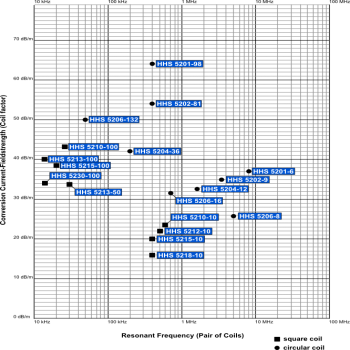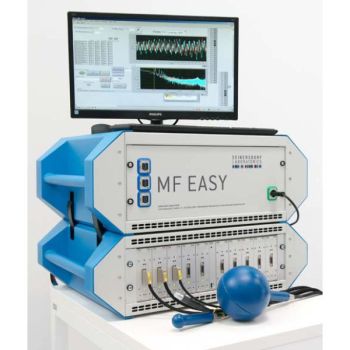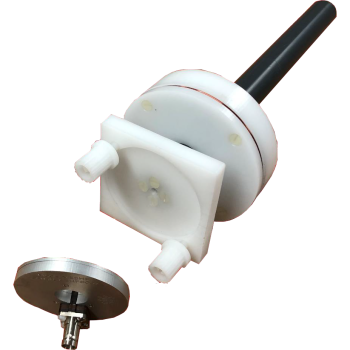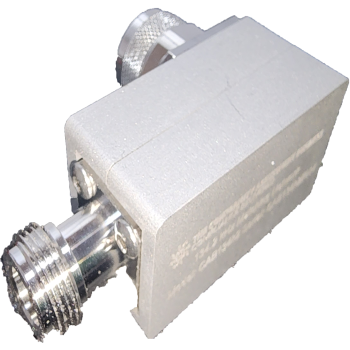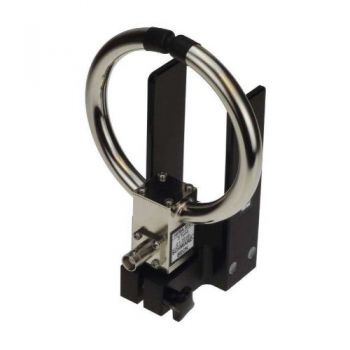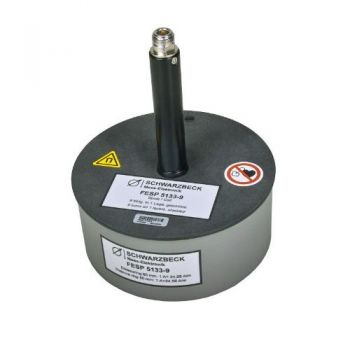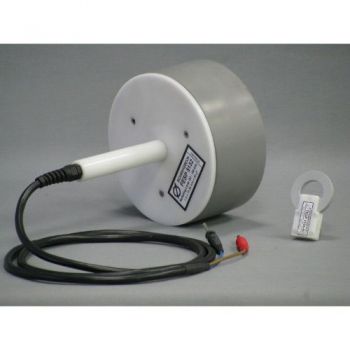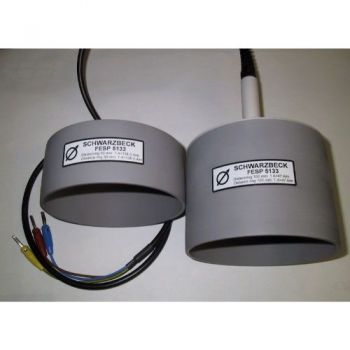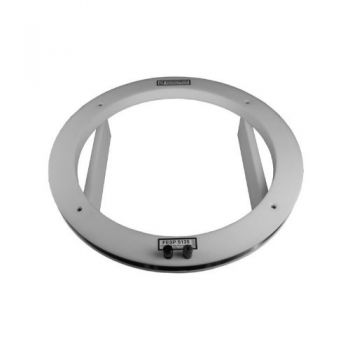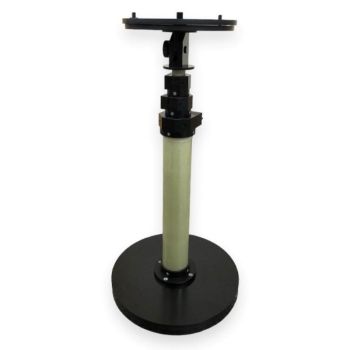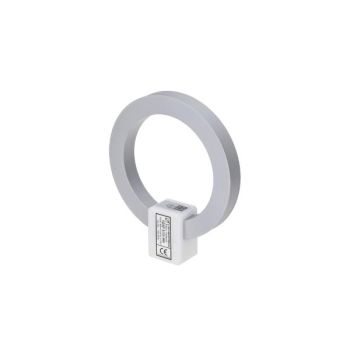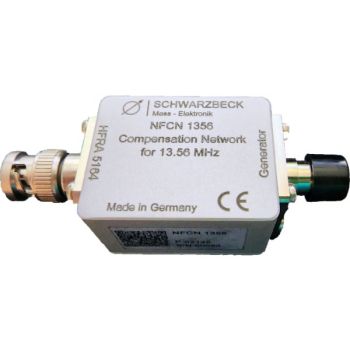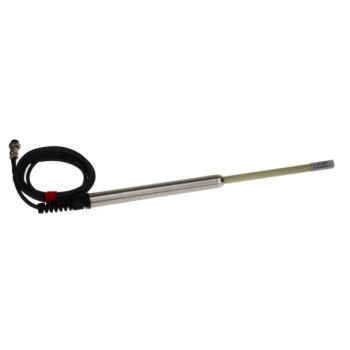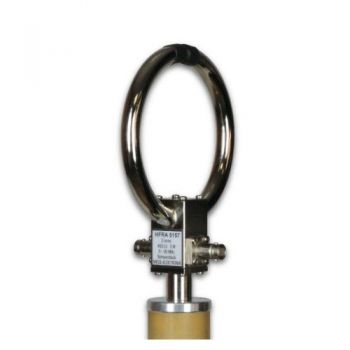
HFRA 5170- DC - 30 MHz Transmitting loop antenna
- The circular transmitting loop antenna
- DC - 30 MHz
- diam. 100 mm
- turns 1
- BNC Connectors
HFRA 5170 - Passive Magnetic Antennas, Tx-Loop AntennaShielded Transmit Loop Antenna to generate magnetic fields with up to 100 dBμA/m field strength. The transmit loop antenna HFRA 5170 was designed to generate well defined magnetic fields with moderate field-strength levels (<0.1 A/m) in the frequency range DC to 30 MHz. With the slightly reduced performance, the loop can be used in the frequency range up to 50 MHz. The loop, consisting of one turn, is shielded against E-fields. The nickel-plated brass housing contains a 10 Ω resistor to monitor the loop current using high impedant voltage measuring equipment (e.g. Oscilloscope or Voltmeter). The voltage drop at the 10 Ω resistor can be used to calculate the loop current, is directly proportional to the generated magnetic field strength. A monitor output voltage of 1 V corresponds to a loop current of 100 mA. A further built-in resistor is used to obtain a flat frequency response over the entire frequency range. The TX-Loop can be connected to 50 W signal generators or power amplifiers directly. The loop can mounted at its female large camera thread.
The generated magnetic field is proportional to the loop current. A tabular indicates the field-strength values in dBμA/m to be expected with the maximum permissible current of 100 mA. Additionally, the relative decrease of magnetic field-strength referred to as the center of the loop antenna can be found. The lower magnetic field strength can be achieved by scaling the current to the respective value. With a feed current of 10 mA instead of 100 mA, the tabular values decrease by a factor of 10, which corresponds to a reduction by 20 dB in logarithmic measure. All specified magnetic field strength refers to the component which is perpendicular to the loop-plane. Application: The female BNC-connector "Input 250 Ω" is used to feed the loop, while the other can be used to monitor the voltage with a voltmeter (high impedance). The measurement distance to apply for the calibration of RX-loops depends on the RX-loop dimensions. For large loop antennas, a higher calibration distance is required in order to obtain a uniform field distribution over the complete loop area. The shorter the distance, the smaller the uniform area and the size of antennas to be calibrated. The following table indicates the recommended minimum calibration distances, depending on the loop diameter of the loop under calibration and the wanted field uniformity.
Specifications:
|


